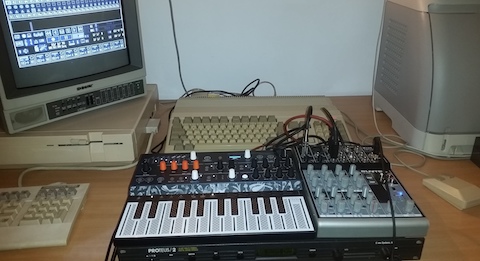Electronics
In this section, I will describe some small electronic projects. Even if most of the circuits presented here are relatively simple, I do not think it is a good place to start for an absolute beginner. Very often, I just give the schematics, the source code if a microcontroller is used and a few words about the behavior of the circuit. I use to savage components from old boards and so I leave to the reader the task of choosing the absolute best devices for the circuit he is fabricating (which are not always the same I adopted). I am acquainted with CAD programs such as Eagle and Altium Designer, but for my hobby circuits I am more interested in the circuit itself than in the nice PCB on the screen of a computer. I use very often breadboards and I give the handwritten schematics. This changed a little bit since I wrote FidoCadJ, which allows me to draw schematics very fast. I am eager to discuss about improvements, corrections and suggestions on my circuits, or to see photos of your circuits.
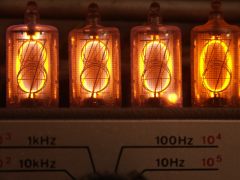
Disclaimer
I can not be considered as responsible in any way for the damages qui could result from a misbehaviour of the circuits presented here. In particular, the reader MUST take an extreme care of the circuits powered directly by the mains, where the high voltage can be very dangerous. In any case, all the security rules imposed by the laws must be respected carefully.Another important point is that the circuits described in this page have been put together between 2004 and today. The state of the art and the techniques available have evolved. Some choices that were reasonable in 2005 may not be the ones I would do today.
Projects, software and circuits
|
|
FidoCadJ (2008-2020)A very simple yet complete graphical editor for electronic circuits and PCBs. FidoCadJ is completely multi platform and is an Open Source project downloaded by hundreds of persons each week. |
|
|
MIDI interface for the Amiga 500 (En, 2020)A MIDI interface for the Amiga 500 computer. |
|
|
Refurbishing an HP4952A protocol analyser (En, 2020)My experience describing the complete refurbishing of an HP4952A protocol analyser. A neat little machine! |
|
|
Analog Electronics for Measuring InstrumentsISTE/Wiley published my book about measuring instruments. |
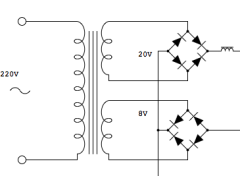
|
FidoReadJ (2007-2013)A little Java applet useful to understand and interpret drawings in the FidoCadJ format, directly inside a web browser. |
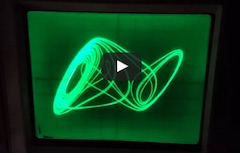
|
Playing with chaos (2016)I built several Chua's circuits showing chaotic behaviours. Videos available! |
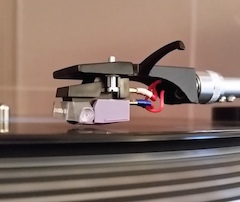
|
PHONO RIAA vacuum tube preamplifier for MM cartridges (2015)My attempt to build a HiFi PHONO preamplifier for moving magnet cartridges, employing vacuum tubes. |
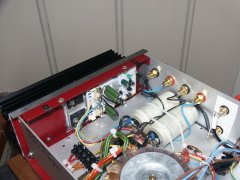
|
55 W + 55 W Amplifier (2011-2015)An article dedicated to building a stereo power amplifier, based on the P3A project by Rod Elliott. |

|
The serial protocol I2C with a 16F84 PIC (2004)A description of the bitbanging routines I wrote for connecting I2C devices to a 16F84 PIC from Microchip. This model is now obsolete, and more advanced devices including an USART now cost a fraction of the 16F84. In any case, this article may still be read as an introduction to the I2C protocol. |
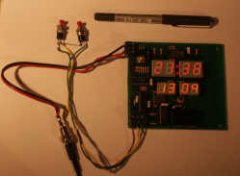
|
A clock based on PIC16F84 and PCF8573, first part (2004)A description of a clock built around some 7 segment displays, a PCF8573 and a PIC16F84 microcontroller. A practical example of a communication on a I2C bus. |
 |
A clock based on PIC16F84 and PCF8573, second part (2004-2007)The second part of the article describing the clock, with the description of a 60-led indicator for the seconds. |
 |
A nixie clock, version 1.0 (2007)A nixie clock based on a PIC16F84, powered by a low voltage supply. |
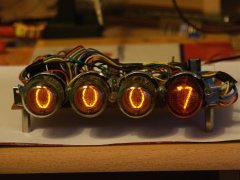 |
A nixie clock, version 2.1 (2008)A nixie clock, built around a PIC16F84. Improved version with a freely available PCB. |
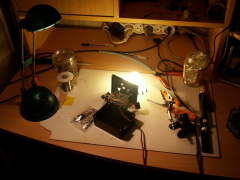
|
A 20 W compact fluorescent light inverter (2009)An inverter adapted for lighting a 20 W compact fluorescent light from a 12 V power supply. Very useful for garages or other places where the mains power is not available. |
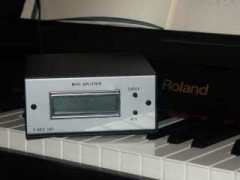
|
Midi canal splitter based on a PIC16F876 (2005-2007)A simple MIDI application based on a 16F876 PIC. |
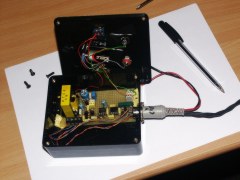
|
An ESR four probes tester (2007)An effort of proposing a precise circuit, but not too much complex, to mesure the Equivalent Series Resistance (ESR) of an electrolytic capacitor. In my prototype, one can appreciate a 0.010 ohm resistance. |
Articles on ElectroYou
In the last years, I participated quite frequently to the very nice ElectroYou portal. The level of the discussions and of the skills of the participants are impressive. This is due thanks to the site admin and webmaster, who honoured me by choosing FidoCadJ as the standard system for exchanging drawings and schematics in the discussions and in the articles. Here are some of the articles I wrote for this website. The images have been provided by Zeno Martini, ElectroYou admin.
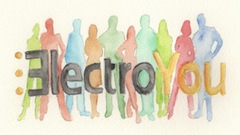
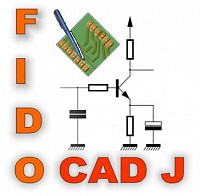
|
Disegnare circuiti con FidoCAD e FidoCadJ (2010)In italian, a sort of historical article: the first presentation of the integration of FidoCadJ in the forum and in the articles of ElectroYou. |
|
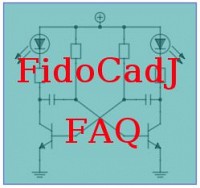
|
Domande frequenti su FidoCadJ (2010-2011)In italian, the answers to the most frequent questions about FidoCadJ. |
|
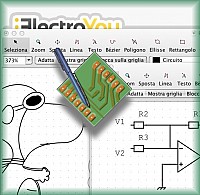
|
FidoCadJ and ElectroYou (Eng, 2011)Available in english and co-authored by Zeno Martini, in this article I describe the integration between FidoCadJ and ElectroYou. This is a much more modern and mature article than the very first one I wrote at the very beginning of the development of this integration. |
|

|
The mathematical symmetry of the differential pair (2011)Available in english, a study of the differential pair. The originality of the study is that the common mode and the differential modes are introduced as the eigenvectors of the operator representing the effect of the circuit on the vector representing the electrical state of the inputs. This article was published a few days before Christmas 2011. |
|

|
Curve tracing: a journey among electronic devices (2013)All (or almost all) you ever wanted to know about curve tracing of electronic devices and you never dared to ask. A journey among electronic tubes and solid-state devices (vacuum, gas and silicon rectifiers, triodes for small signals and power applications, bipolar and JFET transistors for low and high power). |
|
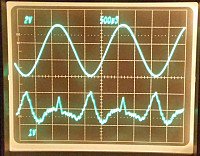
|
Misure di distorsione in campo audio (2016)What is the harmonic distortion (THD and THD+N) in HiFi and how it may be measured. |
|

|
Misurare ESR di condensatori (2022)Written with Stefanopc, how to measure the Equivalent Series Resistance of a capacitor. |
My little lab
I started being interested in electronics in 1989, but only in 2004 I decided to have a little electronics laboratory in my home. This picture shows it as it appeared in 2008.
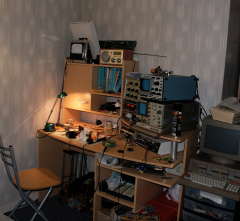
Page log
- December 2022, 29 - Added ElectroYou article Misurare ESR di condensatori. Added this page log.
- 2016 - Added article Playing with chaos. Added ElectroYou article Misure di distorsione in campo audio.
- 2015 - Added article PHONO RIAA vacuum tube preamplifier for MM cartridges. Updated article 55 W + 55 W Amplifier.
- 2013 - Added ElectroYou article Curve tracing: a journey among electronic devices.
- 2011 - Added article 55 W + 55 W Amplifier. Updated article Domande frequenti su FidoCadJ. Wrote ElectroYou article FidoCadJ and ElectroYou (in English). Wrote the ElectroYou article The mathematical symmetry of the differential pair.
- 2010 - Added ElectroYou article Disegnare circuiti con FidoCAD e FidoCadJ. Added ElectroYou article Domande frequenti su FidoCadJ.
- 2009 - Added article A 20 W compact fluorescent light inverter.
- 2008 - Added the FidoCadJ page. Added article A nixie clock, version 2.1. Added the picture of the lab.
- 2007 - Updated the PIC16F84 clock and the MIDI splitter. Added A nixie clock, version 1.0. Added the FidoReadJ applet. Added article An ESR four probes tester.
- 2005 - Added article Midi canal splitter based on a PIC16F876.
- 2004 - Added article A clock based on PIC16F84 and PCF8573, first and second part.

